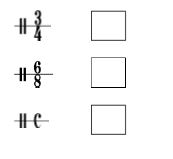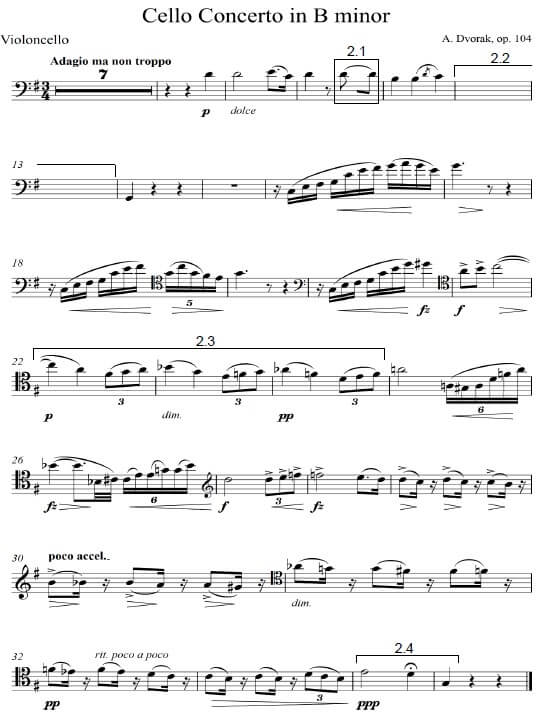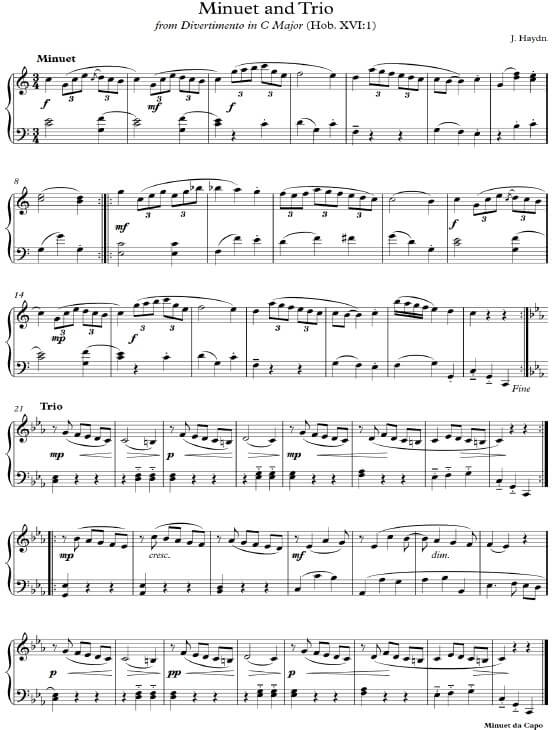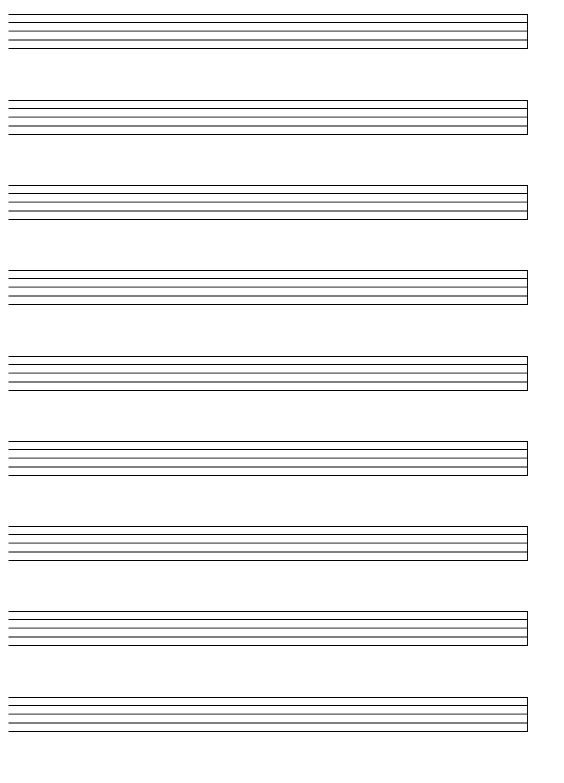MUSIC PAPER 2 GRADE 12 QUESTIONS - NSC PAST PAPERS AND MEMOS SEPTEMBER 2016
Share via Whatsapp Join our WhatsApp Group Join our Telegram GroupMUSIC
PAPER TWO (P2)
GRADE 12
EXAM PAPERS AND MEMOS
SEPTEMBER 2016
INSTRUCTIONS AND INFORMATION
- This question paper consists of THREE sections:
SECTION A (Aural) (10)
SECTION B (Recognition) (12)
SECTION C (Form) (8) - QUESTION 1, QUESTION 2, QUESTION 3 and QUESTION 7 are COMPULSORY.
- Answer QUESTION 4 (WESTERN ART MUSIC – WAM) OR QUESTION 5 (JAZZ) OR QUESTION 6 (INDIGENOUS AFRICAN MUSIC – IAM).
- Candidates must write their answers on this question paper. Use a pencil for music notation and blue or black ink for the other answers.
- This examination will be written while candidates listen to a CD.
- The music teacher at the centre must conduct the examination in the presence of the invigilator.
- The last page of the question paper is manuscript paper intended for rough work. It may be removed by the candidate.
- Candidates may NOT have access to any musical instrument for the duration of this examination.
- Write neatly and legibly.
INSTRUCTION TO THE PERSON OPERATING THE SOUND EQUIPMENT
- The instructions for the music teacher appears in the frames.
- Each musical extract (track) must be played the number of times specified in the question paper.
- Allow enough time between tracks to allow candidates time to think and write their answers before playing the next track.
- The number of the track must be announced clearly each time before it is played.
- If a school offers more than one stream (WAM, JAZZ, IAM), the following guidelines must be followed:
- Each stream must write the examination in a separate venue.
- Each venue must be equipped with suitable sound equipment.
- Each venue must have its own CD with musical extracts
- An invigilator must be present in each venue.
- The tracks have to be played as follows:
- WAM candidates: Tracks 1 to 14 and Track 23.
- JAZZ candidates: Tracks 1 to 10; Tracks 15 to 18 and Track 23.
- IAM candidates: Tracks 1 to 10 and Tracks 19 to 23.
- A battery-powered CD player must be available In case of a power failure.
MARKING GRID
SECTION A: AURAL | TOTAL | MARKER | MODERATOR |
QUESTION 1 (COMPULSORY) | 4 | ||
QUESTION 2 (COMPULSORY) | 6 | ||
SUBTOTAL | 10 |
SECTION B: RECOGNITION | TOTAL | MARKER | MODERATOR |
QUESTION 3 (COMPULSORY) | 4 | ||
AND | |||
QUESTION 4 (WAM) | 8 | ||
OR | |||
QUESTION 5 (JAZZ) | 8 | ||
OR | |||
QUESTION 6 (IAM) | 8 | ||
SUBTOTAL | 12 | ||
SECTION C: FORM | TOTAL | MARKER | MODERATOR |
QUESTION 7 (COMPULSORY) | 8 | ||
SUBTOTAL | 8 |
GRAND TOTAL | 30 |
QUESTIONS
SECTION A: AURAL
QUESTION 1 (COMPULSORY)
| Play Track 1 THREE times. Pause for 30 seconds in between. |
1.1 Listen to the melodic and rhythmic phrase. Notate the rhythm of the missing notes in bars 2–3 below.

| Play Track 1 ONCE more. |
| Play Track 2 TWICE in succession. |
1.2 Make a cross (X) in the block next to the correct time signature of this extract.
[4]
QUESTION 2 (COMPULSORY)
| Play Track 3 ONCE to provide a general overview. |
Listen to the extract from the second movement of Cello Concerto, Op. 104 by A. Dvořák. Answer the questions that follow. 
| Play Track 4 TWICE. |
2.1 Name the interval at 2.1, for example Major 3rd. (1)
| Play Track 4 FOUR times. Pause ONE minute between each repetition. |
2.2 Fill in the missing notation at 2.2 in bars 12 and 13. (3)
| Play Track 5 ONCE. |
2.3 Identify the compositional technique used at 2.3 in bars 22–24. (1)
| Play Track 6 TWICE. |
2.4 Name the cadence used at 2.4. (1)
[6]
TOTAL SECTION A: 10
SECTION B: RECOGNITION OF MUSIC CONCEPTS
QUESTION 3: GENERAL LISTENING (COMPULSORY)
Mark THREE items in COLUMN A in QUESTIONS 3.1–3.4 that relate to the music that you hear. Make a cross (X) in THREE appropriate blocks.
3.1 (3)
| Play Track 7 TWICE. |
COLUMN A | Track 7 |
Homophonic Texture | |
Baroque Period | |
Concerto | |
Polyphonic Texture | |
Classical Period | |
Piano Sonata |
3.2 (3)
| Play Track 8 TWICE. |
COLUMN A | Track 8 |
Primary chords | |
A cappella | |
Polyrhythm | |
Parallel intervals | |
Ankle rattles | |
Call and response |
3.3 (3)
| Play Track 9 TWICE. |
COLUMN A | Track 9 |
Piano | |
Pennywhistle | |
Township Jive | |
Accordion | |
Syncopation | |
Mbaqanga |
3.4 (3)
| Play Track 10 TWICE. |
COLUMN A | Track 10 |
Suspensions | |
Irregular metre | |
Minor key | |
Regular metre | |
Adagio | |
Timpani |
(12 ÷ 3) [4]
Answer QUESTION 4 (WAM) OR QUESTION 5 (JAZZ) OR QUESTION 6 (IAM).
QUESTION 4: WAM
4.1
| Play Track 11 ONCE. |
4.1.1 Identify the brass instrument playing at the beginning of this extract. (1)
| Play Track 11 ONCE again |
4.1.2 Describe this work with regard to genre, tempo and time signature.
Genre:
Tempo:
Time signature: (3)
4.1.3 Provide this extract with a suitable title. (1)
4.2
| Play Track 12 ONCE. |
4.2.1 Identify ONE woodwind and ONE string instrument that plays the melody at the beginning of this extract.
Woodwind instrument:
String instrument: (2)
4.2.2 With which ONE of the following genres do you associate this extract? Make a cross (X) in the appropriate block.
| Chamber music | Concerto | Symphony | Concert overture |
(1)
| Play Track 12 ONCE again. |
4.2.3 Identify the composer and give a title for this work.
Composer:
Title: (2)
4.3
| Play Track 13 TWICE. |
4.3.1 Which style of composition that was predominantly used during the Baroque period is evident in this extract? (1)
4.3.2 Name the subgenre in opera music that is associated with this extract. (1)
4.3.3 Identify the composer of this work.
Make a cross (X) in the appropriate block.
| Bach | Mozart | Mendelssohn | Chopin |
(1)
4.4
| Play Track 14 TWICE. |
Mark THREE items in COLUMN A that is related to Track 14.
Make a cross (X) in THREE appropriate blocks.
COLUMN A | Track 14 |
Pamina and Papageno | |
Allegro assai | |
Papageno and Papagena | |
Andantino | |
Sarastro and chorus | |
Recitative | |
Larghetto | |
Duet |
(3)
(16 ÷ 2) [8]
OR
QUESTION 5: JAZZ
5.1
| Play Track 15 TWICE. |
5.1.1 Identify the woodwind instrument playing in this extract. (1)
5.1.2 Identify the South African jazz style. (1)
5.1.3 Name the group that you associate with this extract. (1)
5.2
| Play Track 16 TWICE. |
5.2.1 Identify the South African jazz style. (1)
5.2.2 Give TWO reasons to motivate your answer to QUESTION 5.2.1. (2)
| Play Track 16 TWICE. |
5.2.3 Describe the music with regard to typical rhythmical features and time signature(s).
Rhythm:
Time signature: (2)
5.2.4 Identify the group performing this work. (1)
5.3
| Play Track 17 TWICE. |
5.3.1 Identify the style and artist that can be heard in this extract. (2)
5.3.2 Name ONE chordophone and ONE electrophone instrument featured in this extract.
Chordophone:
Electrophone: (2)
5.4
| Play Track 18 TWICE. |
Mark THREE items in COLUMN A that is related to Track 18. Make a cross (X) in THREE appropriate blocks.
COLUMN A | Track 18 |
Piano improvisation | |
Blues Notes Band | |
Dollar Brand | |
Cape Jazz | |
Trumpet improvisation | |
Brotherhood of Breath | |
Kwela | |
Jazz in exile |
(3)
(16 ÷ 2) [8]
OR
QUESTION 6: IAM
6.1
| Play Track 19 TWICE. |
6.1.1 Identify the type of African song associated with this extract. Make a cross (X) in the appropriate block. (1)
| Funeral song | Work song | Initiation song | Wedding song |
6.1.2 Identify ONE vocal technique used in this extract. (1)
6.1.3 Which voice group performs this song? (1)
6.2
| Play Track 20 ONCE. |
6.2.1 Identify the South African style. (1)
| Play Track 20 ONCE. |
6.2.2 Describe the instrumentation used in this extract. (2)
6.2.3 Identify the group performing in this extract. (1)
6.3
| Play Track 21 ONCE. |
6.3.1 Name and define the style that you hear in this extract. (2)
6.3.2 With which African tribe do you associate this music?
Make a cross (X) in the appropriate block. (1)
| AmaZulu | AmaXhosa | AmaSwazi | AmaNdebele |
| Play Track 21 ONCE. |
6.3.3 Identify ONE prominent chordophone instrument used in this extract. (1)
6.3.4 Why is this South African style so closely related to Blues? (2)
6.4
| Play Track 22 TWICE. |
Mark THREE items in COLUMN A that is related to Track 22. Make a cross (X) in THREE appropriate blocks.
COLUMN A | Track 22 |
Djembe | |
Polyrhythm | |
Philip Tabane | |
Monophonic | |
Free Kiba | |
Tabla drums | |
Sello Galane | |
vhaVenda drums |
(3)
(16 ÷ 2) [8]
TOTAL SECTION B: 12
SECTION C : FORM
QUESTION 7 (COMPULSORY)
Read and study the questions for ONE minute.
| Play Track 23 ONCE to provide an overview. |
| Play Track 23 ONCE again. |
7.1 Name the overall form of this work. (1)
7.2 Give an analysis of the form of the Minuet. (9 ÷ 3) (3)
Minuet:
SECTION | BARS | MAIN KEYS |
7.3 Give an analysis of the form of the Trio. (9 ÷ 3) (3)
Trio:
SECTION | BARS | MAIN KEYS |
7.4 How is the key of the Trio related to the key of the Minuet? (1)
| Play Track 23 one last time. |
TOTAL SECTION C: 8
GRAND TOTAL: 30
ROUGH WORK:
